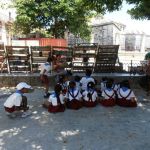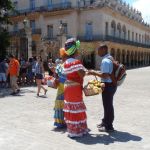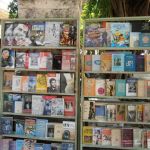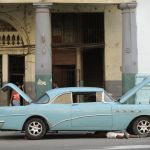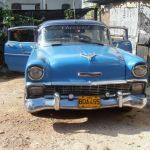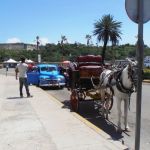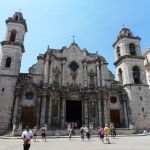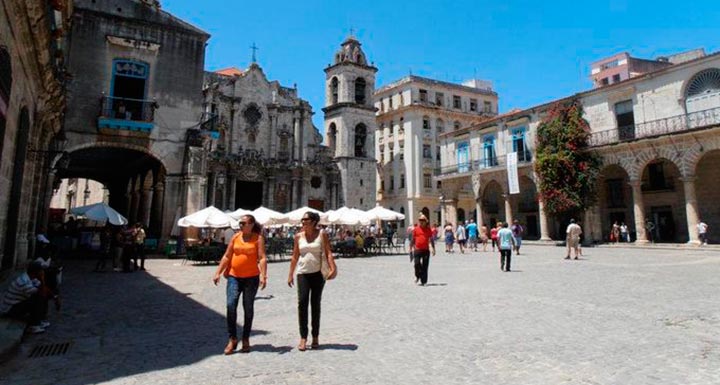
Why travel to Cuba?
Cuba may only be 90 miles from Florida, but for half a century it’s been largely off-limits to most Americans.
That could soon change now that President Obama has normalized relations with the island nation.
Since 2011, Americans have only been allowed to go to Cuba on people-to-people tours run by licensed companies.
Last week, Obama asked the Treasury Department to expand the categories of people who can travel to Cuba without a license. Visiting just for tourism will still be forbidden. But the new regulations will certainly open up the island to many more people.
This renewed attention on Cuba has many would-be travelers wondering: What does our island neighbor have to offer? We talked to a few Cuba experts to find out.
Old buildings and cars
Cuba’s streets are filled with classic American cars from the 1950s.
No, it’s not because Cubans are enthusiastic car collectors. After Fidel Castro became president in 1959, he imposed a law requiring government permission to buy a new foreign car.
Over the years, Cubans have been inventive in their maintenance of those relics of the past. With an embargo in place, getting the right equipment has been difficult. Open the hood of an old Mercedes and you’ll see a mishmash of parts that have been acquired through Cuban ingenuity.
Regardless of what’s under the hood, car enthusiasts will probably want to flock to Cuba.
Aside from the cars, there are plenty of other fascinating sights to behold on the island, says Jason Sarracini, vice president and general manager for Travelzoo Canada.
The island has nine UNESCO world heritage sites, he says. Sarracini has been to Cuba a few times because Canadians have no travel restrictions.
“They’re architectural gems,” Sarracini says. “They’ve never been discovered by Americans or at least seen in this generation.”
Among them is the San Pedro de la Roca Castle at Santiago de Cuba, the second largest city in Cuba. UNESCO calls the fort, built in 1638, one of the best preserved examples of Spanish-American military architecture.
Sarracini also recommends a visit to the urban center of Cienfuegos, founded as a Spanish colony in 1819.
The coffee plantations in southeast Cuba, which date back to the 1800s, are also beautiful attractions to explore, he says.
Beaches and nature
Cuba has more than 300 beaches spread out across its northern Atlantic Ocean and its southern Caribbean coastlines.
Lee Abbamonte, a travel expert who at 36 bills himself as the youngest American to have visited every country in the world, has been to Cuba multiple times.
Two of his favorite beaches, Playa Paraiso and Sirena, are connected to each other on the island of Cayo Largo del Sur.
“What makes Playa Paraiso and Sirena so awesome is that they are basically untouched stretches of white sand and away from the main tourism infrastructure,” he says. “Simplicity is the way of life there.”
Another secluded beach on the southern coast of Cuba is Playa Ancon.
“Playa Ancon is also very unspoiled white sand beach and could possibly be tops in all of Cuba but away enough so that it’s not overrun yet with tourists,” he says.
Playa Ancon is near the city of Trinidad, a UNESCO World Heritage site. Surrounded by the Escambray mountains, it offers picturesque views.
If you prefer a few more amenities, Abbamonte suggests going to Varadero, a resort town located on the Hicacos peninsula about 85 miles from Havana.
Travelers can enjoy a variety of water activities there such as snorkeling, scuba diving and even swimming with dolphins.
In addition to more than 10 miles of beaches, Varadero has natural attractions such as caves.
And the nearby Varahicacos ecological reserve offers opportunities for hiking and birdwatching.
Abbamonte says that Varadero is the place to go “if you’re looking for the all-inclusive type holiday that you’d find in the Dominican Republic” and ot
Music and art
“The Cuban people are very creative,” says Nancy Davids, senior product manager at Collette, which is licensed to run people-to-people tours.
Forget about rum and cigars. The art and music is what makes Cuba such a fascinating place, she says.
“I think a lot of the mystique and excitement of going there is the art and music,” she says. “When you hear the music, your foot starts to tap.”
There’s no one type of Cuban music. The music and instruments are influenced by Cuba’s African and European traditions. Walk into a bar or club and you may hear salsa, merengue, rumba, jazz, or any other number of genres.
“There’s music for breakfast, lunch, and dinner every day in Cuba,” she says.
In addition to talented musicians, Cuba also has a thriving community of artists.
One such artist, Jose Fuster, has decorated homes in the town of Jaimanitas, outside of Havana, with murals and tiles.
“He’s likened to the Gaudi of Cuba,” she says. “He’s created a funky, art deco neighborhood.”
Davids also recommends a visit to the National Museum of Fine Arts in Havana. The collection ranges from the traditional to the modern. “It’s as good as any museum in New York,” she says.
Art is available everywhere in Havana, from markets to street corners.
“You’ll find painters sitting on a corner painting a landscape,” she says.
Food and drink
Douglas Rodriguez, founding chef and co-owner of Stephen Starr’s Alma de Cuba in Philadelphia, plans to take a group of 17 travelers to explore Cuba’s vibrant culinary scene in March.
Rodriquez, whose parents are Cuban immigrants, has some favorite spots from his many times visiting the island.
Cuban cuisine is much more inventive than just black beans and rice, he says. You can see Cubans’ entrepreneurial spirit at work in the kitchen. Because of the embargo, they don’t always have the best ingredients. But they make do.
Paladares, privately owned restaurants that are often run by families, sometimes out of their homes, have become popular in recent years. They are intended to give tourists a truly authentic Cuban experience.
Rodriguez says his favorite paladar is La Guarida, which has a menu of tapas. It has been operating for more than a decade but has expanded and added a rooftop lounge with great views of old Havana. “The building is really beautiful,” he says.
Atelier Paladar has an interesting menu by up-and-coming chef Niuris Higuera.
“The inside of the restaurant is a mix of vintage colonial pieces and cool contemporary Cuban art,” he says. “Chef Niuris is someone that the industry is paying attention to.”
El Chanchullero is serving up some inventive Spanish tapas. The restaurant is popular among chefs, but don’t expect to see white tablecloths and fancy China.
“It’s noisy, hard to find, on the divey side,” he says, “but it’s a perfect place to hang with the locals, eat really good and inexpensive food, hear music and yes, the drinks are great too.”
For drinks, he suggests El Cocinero, a cooking oil factory that has been converted to a lounge popular with local actors and artists.
Sloppy Joe’s bar, which re-opened in 2013 after being shut down for nearly 50 years, has been completely restored to its historical past, he says.
“It’s a state-run business and they put together a well-researched and trained staff,” he says. “The bar men whip up hand crafted cocktails – some of the best in Havana.”
If you go
For now, Americans can only go to Cuba via people-to-people tours through licensed companies such as Insight Cuba and Collette.
Because the companies have to go through a rigorous licensing process and hire chartered planes and tour guides, their trips tend to be more expensive than they would be for non-Americans visiting Cuba.
The new rules will probably mean that the prices will drop for those tours. And at some point, Americans traveling in approved categories will probably be able to go to Cuba without a guide.
For now, U.S. airlines such as Delta and JetBlue Airways only do charter flights to Cuba. The airlines say it is too soon to tell how the new rules will change that.
“We look forward to expanding service into Cuba as more opportunities become available,” Delta said in a written statement.
Joe Diaz, co-founder of AFAR Media, a travel magazine, says that for now, it will probably be easier to navigate the country with the help of a travel agent, tour operator or adviser who has been there before.
Obama says that American credit and debit cards will soon work there. It is unclear when that will happen. So cash is still king right now.
Internet service is also still unreliable, and American cell phones do not work.
Still, Diaz recommends going to Cuba before the crowds get there.
“I do think this is a great step in the right direction for tourism and travel and this whole idea of human connection,” he says. “I think it’s really important to go now because as Cuba opens up and more investment comes into the country—from tour operators, cruise lines—it’s going to change the fabric of the country.”
(From the: USA Today)


